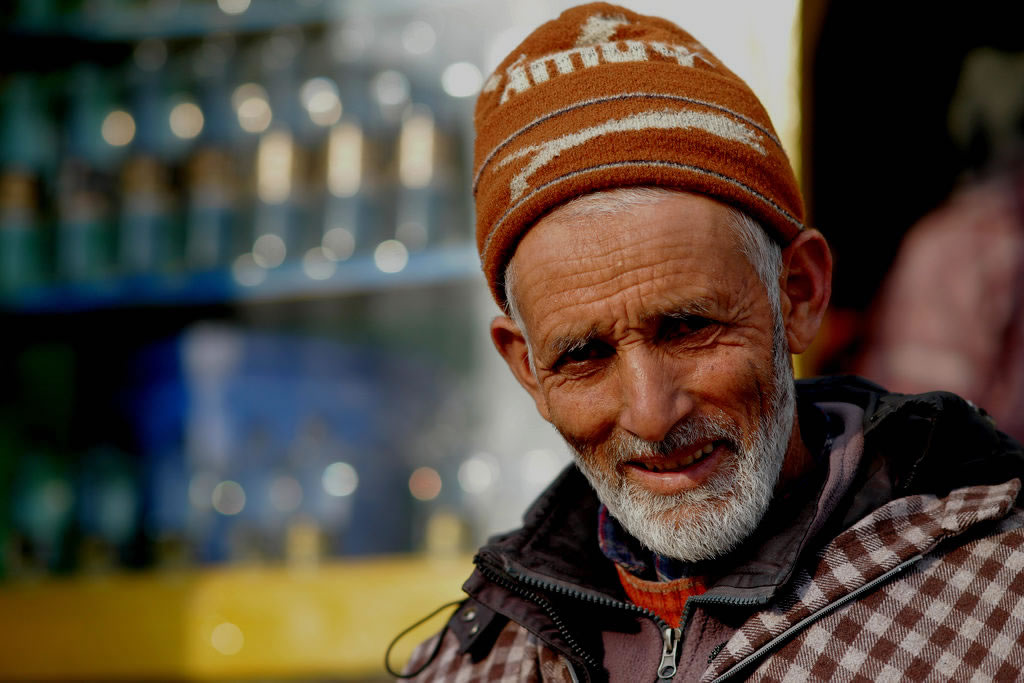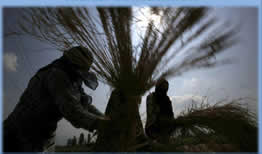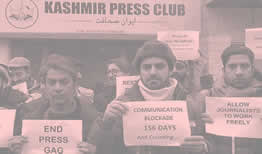Kashmir Conflict and Its Impact on the Socio-economic Development of Neelum Valley
Kashmir Conflict and Its Impact on the Socio-economic Development of Neelum Valley
Abstract:
Neelum Valley, which is part of Azad Jammu and Kashmir (AJK), has been affected by the Kashmir conflict—a territorial dispute between India and Pakistan—for a considerable amount of time. The socioeconomic vulnerabilities of this strategically important region, which is split along the Line of Control (LOC), have been made worse by continual military confrontations and cross-border shelling.
By
Adnan Rasheed Mughal
Bs in International Relations Federal Urdu University Islamabad
Despite the region's potential for
tourism, agriculture, and cultural heritage, the fighting seriously impairs
these sectors, displacing people and limiting their access to necessities like
healthcare and education. This article examines how the violence has affected
Neelum Valley's growth through an analysis of its infrastructure, social
dynamics, and economic activity using the vulnerability framework. The article
illustrates how major occurrences like the 2005 earthquake, floods, and ongoing
military tensions impacted the socio-economic development of Neelum Valley.
Introduction:
Kashmir has been a disputed territory between India and Pakistan since the time of their independence in 1947 to the present. Kashmir exists in a temporary state of division, into Azad Jammu Kashmir (AJK), and IIOJK (Indian Illegally Occupied Jammu and Kashmir) known as Jammu Kashmir. This conflict has multiple phases of peace and conflict. While border districts are the most affected by the conflict across the LOC. Neelum Valley is part of Pakistan's administrated Azad Jammu and Kashmir. Neelum Valley was a part of Muzaffarabad district until 2005. Azad Kashmir has 10 districts and Neelum Valley is one of them. After 2005 Neelum Valley became a separate district located in the north of Azad Kashmir.
The total area of 3,621 square kilometers is the largest district by
area in Azad Kashmir. The valley lies within the lower and upper Himalayas and
is divided into three climatic zones. Previously, Neelum Valley was struck by
massive floods in 1992 and border tension between 1989 to 2003 ceased the life
in the area. The 2005 Earthquake and 2010 floods disturbed the entire fragile
socio-economic dynamics of Neelum Valley. Later the border tension between 2016
and 2021 halted the socioeconomic indicators such as Education, Health, and the
economy, which were hugely impacted by the adding dynamics over the years and
created direct and structural impacts that are still present. Due to this, the
district's socio-economic development is hampered and hasn’t improved.
Neelum Valley holds great potential for tourism, agriculture, and cultural heritage. It is a strategically important location. The lush ground of the valley supports agriculture, and its natural beauty draws tourists from both local and foreign locations. However, the continuous conflict, which is characterized by military skirmishes and Indian military shelling, severely limits tourism, interferes with agricultural operations, and causes population mobility and displacement. People who have been displaced sometimes live in miserable conditions and have restricted access to essential services like healthcare and education. Transportation, market accessibility, and other vital services are hampered by limited infrastructure, and damage results from cross-border tension over the years. Economic instability restricts chances for development and investment, exacerbating poverty and reducing growth potential.
Natural
resources are threatened by the environmental damage caused by the
circumstances created by the cross-border tension. The ongoing danger of war
results in the least followed route to the sustainable and inclusive
socio-economic development of the Neelum Valley. This article will analyze how
the conflict exacerbated the socio-economic vulnerabilities. By utilizing the
Vulnerability framework this article devolves into how the Neelum Valley
developed, its economic activities, and its social fabrics are impacted by
conflict. Also, how the conflict affected the infrastructure, local economy,
education, healthcare, and overall quality of life, understanding these impacts
is crucial for devising strategies to promote socio-economic development.
Socio-Economic
Challenges of Neelum Valley
Socio-economic
development is defined or characterized as the process of socio-economic
development as a policy to better the lives of individuals, communities, or
groups by providing them with basic facilities like education, health, economy,
and security to improve their living standards. In the case of Neelum Valley
the residents of Neelum Valley face several key challenges in the
socio-economic sector due to a lack of infrastructure. There is no proper
infrastructure development in the Neelum Valley and the existing infrastructure
has been damaged due to various factors like flooding, earthquakes, and
environmental factors like climate change. The primary factor that plays a
crucial role in the socio-economic vulnerability in Neelum Valley is the Kashmir
conflict. Because of the conflict and security challenges, the residents of
Neelum Valley face various difficulties in socio-economic development a lack of
infrastructure mostly impacts the Valley. Also, the conflict impacted the
education sector. The education sector is also vulnerable due to conflicts in
the quality of good education and or accessibility the health sector or
economic sector also faces various challenges due to the conflict zone.
Educational
Disruptions in Neelum Valley
Education is a fundamental right for everyone according to (UDHR) Article 26 everyone has the right to education. It should be free at least primary education, the main purpose of education is to empower individuals with knowledge skills, and critical thinking. In the case of Neelum Valley, the residents of Neelum Valley face enormous challenges in the education sector due to different factors like lack of infrastructure development, cross-border shelling, remoteness and vastness of the district, poverty, and security challenges. These factors are exacerbated by the Kashmir conflict which causes the overall disruption to the education system of the Neelum Valley. Education is inadequate both qualitatively and quantitatively at all levels. Neelum Valley's literacy rate is low compared to other districts of Azad Jammu Kashmir.
There are only government schools all over the valley, very few private schools, and very few can afford private education. Many metrics can understand the Quality of education but the board results and the confidence and excellence of students show there is a serious lack of educational development at the primary, secondary, and university levels. The dropout rate of the Neelum Valley from primary to secondary and high school is significant. There is only one Campus of the University of AJK in the Neelum Valley which has only three departments available to the 5% of the population of the AJK. Neelum Valley's inherited problem is that it comprises 27% of the territory but is home to the 5 population only. Neelum Valley is one of the impacted areas due to conflicts in the quality of good education or accessibility and is more vulnerable when security tension between Pakistan and India directly affects the people of Neelum Valley in different sectors disturbing their education, health, and economy been dealing with serious issues as a result of its isolated position and the ongoing fighting along the Line of Control (LoC).
According to the (SDG)AJK district scorecards 2023, Neelum Valley's educational
difficulties are closely linked with the ongoing conflict in Kashmir and the
region located along the Line of Control (LoC). Only 26% of children and young
people in Neelum Valley have the opportunity to perform in school, The data
offered throws significant light on the rates of literacy and educational
attainment in Azad Jammu and Kashmir's (AJ&K) various districts. The
following are some key things to keep in mind. Overall Literacy Rate: For
people 10 years of age and older, AJ&K has an overall literacy rate of 78%.
However, there is a glaring gender gap, with men's literacy rates being 85%
higher than women's (72%) Literacy by District Highest Literacy With 91% of its
people literate, Mirpur district has the highest literacy rate. In Mirpur, the
literacy rate for men is 93%, while the rate for women is somewhat lower at
90%. Lowest Literacy With a literacy rate of 55%, Neelum district has the
lowest literacy rate in the AJ&K. In Neelum, there is a stark gender gap in
literacy due to the non-availability of women's schools and colleges. These
difficulties that emerged from the Kashmir conflict due to direct firing
disturb the educational flow in Neelum Valley because the valley is located in
the conflict zone. Enrollment, male-female ratio, and Quality of Education.
Proximity
to the Conflict Zone (LoC)
Because
of its geographical location, the Neelum Valley is vulnerable due to
cross-border shelling and disruptions from conflicts, which frequently result
in the closure of schools, the loss of infrastructure, and the takeout of
communities. Regular school attendance is difficult for teachers' and students'
fear of conflict. When there was security tension in India and Pakistan, many
educational institutions were closed from 1989 to 2003 an agitated time between
the state and the education sector of Neelum Valley because of the shilling
these situations badly affected the quality of good education in the Neelum
Valley. Due to the shilling, the students do not attend school and their
courses are not completed on time. Due
to this, the students have to face difficulties at the time of the papers It is
for this reason that parents and teachers support students for cheating in
examination hall to fulfill the criteria of their promotion, and because of
these situations’ teachers show their aggression on student and the suffered
more face the psychical trauma due to conflict zone and teacher aggressiveness
it is not the fault of teacher they also face the same psychical trauma due to
the conflict.
Displacement
and Migration
Families
are frequently forced to leave their houses due to security threats near the
Line of Control (LoC), either permanently in search of safer living conditions
or temporarily during violent outbursts. Children's education suffers greatly
due to this relocation since their instruction is frequently interrupted.
Stability breeds contingency, and learning continuity is lost when students
constantly move to various sites. A lot of kids have trouble adjusting to new
learning environments or institutions, which affects their foundation in the
classroom. In addition, families that have been uprooted frequently experience
psychological and financial difficulties, which puts schooling last among their
essential survival needs. Thus, there is a marked decline in the general
quality of education in these conflict-zone areas. Displacement and migration had long-term impacts on the
institutional development of institutions. These factors make the education
system more vulnerable in the Neelum Valley.
Poor
Infrastructure Development:
The continuous fighting in the Neelum Valley has made it extremely difficult to establish infrastructure, there is no proper infrastructure development in the education sector due to the conflict zone which has led to a noticeable scarcity of schools, especially upper secondary and secondary schools. Students are forced to travel great distances to the closest schools, frequently through areas prone to conflict, due to a shortage of educational facilities. In addition to discouraging consistent attendance, this circumstance put in danger the safety and well-being of the Students in the Neelum Valley, who must travel every day from isolated villages like Sharda and Kel to the closest secondary school, which is situated in a bigger town like Kel or Athmuqam. Students are exposed to increased risk and stress on these travels if they must travel through areas near the Line of Control (LoC).
Due to the poor infrastructure
development in the education sector, it is difficult for students to access
educational institutions easily and the unfunctional monitoring system of the
government is also a reason for security threats the management department of
the government is not able to visit the accountability and balance and check
the progress It is difficult to find and
keep skilled teachers in the area due to security concerns. Many capable
educators are rejected from entering these fields due to safety concerns and
insecure working conditions, which have an impact on educational quality. The
lack of specialized subjects and a varied curriculum in schools limits most of
the outsider faculty, who are mostly absent due to the safety and fear of
conflict. The absence of a consistent and proficient teaching workforce
exacerbates educational disparities and impedes student growth and potential.
Mental
Health Impact:
Students
who live in this area face psychological trauma due to fear of conflict and
emotional strain due to the constant danger of conflict. They struggle to focus
and maintain their mental health as a result of this constant stress, which
makes it difficult for students to participate fully in their educational
institutions like school or college. Their academic performance consequently
decreases. The Kashmir conflict also impacts the psychological trauma in the
students of Neelum Valley because of fear of conflict students are mentally
disturbed and not properly focused on their studies. Stress can have a direct
and indirect effect that can result in long-term cognitive and psychological
issues, which exacerbate learning difficulties and impede academic progress
overall. All of these factors together account for Neelum Valley's educational
performance conflict plays a major role in the pure education in Neelum Valley
as compared to the other districts in AJ&K is better than the Neelum Valley
in the report shows the Neelum Valley in the 9 number in the table behind these
pure ranking. The conflict's direct and indirect effects still impact the
education system in Neelum Valley.
Healthcare
Disruptions in Neelum Valley
Healthcare is a supportive institution for the systematic distribution to promote the preservation and regain is referred to as healthcare. Healthcare refers to a collective effort to promote the prevention of diseases and health facilities through government policies, community-based programs, and public health systems focusing on bettering the health of the individual and community reducing health issues. The healthcare infrastructure in the Neelum Valley includes the ( DHQ) hospital located at Athmuqam the district headquarter, the other one is (THQ) hospital in Kel Azad Kashmir, the Rural Health Center in Sharda, and the Basic Health Units( BHU) Kutton, Jagran, Lawat Bala, Lawat Bor, dome, Chogali, Nagdar, Janawi, Surgan, Halmat, Kundalshi, Mirpura, Chilhana, Changan, Dudhail, FAP k Tao but, FAP k jaguar, FAP k arang kel, FAP kundian/khakhian, FAP Rata Pani, FAP bantil FAP k Aour syedan CD Dowerian, this is the detail of health sector infrastructure in Neelum valley but due to Kashmir conflict, these all sector is not functional conflict plays a role to make the vulnerable the health sector of Neelum valley also disturb due to the location and their geopolitical landscape play a role to the disruptions of healthcare in Neelum valley. There are three basic healthcare sectors primary healthcare, secondary healthcare, and tertiary healthcare, there are some primary health services that in limited. And some secondary services are even more limited.
The Neelum Valley lacks specialized hospitals and medical centers that provide care some basic treatments, and secondary healthcare services, locals mostly have to go to urban areas like the capital Muzaffarabad. When the locals Get to Muzaffarabad for specialist care it can be challenging particularly in times of war and natural disaster(such as floods or land sliding), because Neelum Valley has only one single road connected with other districts due to a lack of good infrastructure the residents of Neelum valley face many challenges in secondary healthcare, due to unavailability of tertiary healthcare which people have to face a lot of difficulties when they are suffering from such diseases, they have to go to big cities for treatment and in times of conflict it is tough for people to travel one place another place because there is only one road in Neelum Valley which connects Neelum Valley with other cities like Muzaffarabad and other cities and district.
Healthcare
Facilities in Neelum Valley
This table shows the health facilities' number of hospitals and beds in 2020 and 2022 in Neelum Valley From 2013 to 2016 the same number of hospitals and beds when population of is 200000 to 230000 approximately but in 2022 the population rapidly increased from 200000 to 270000 or 300000 but there is no change in the number of hospitals and the bed and the health facilities in the Neelum valley One of the most vulnerable areas of the is Neelum Valley, whose health infrastructure has been significantly impacted by the Kashmir conflict. Despite significant population growth, the lack of expansion in healthcare facilities highlights the need for targeted initiatives to enhance healthcare services. To overcome these obstacles, it is necessary to improve the health sector of the Neelum Valley and increase the number of hospitals and the capacity of beds in existing hospitals.
This table shows the specific data for maternal and newborn health services in the Neelum Valley year 2022. Maternal and newborn health services in the Neelum Valley, which is highly impacted by the Kashmir conflict, indicated major issues in 2022. According to the findings, 3,48 of the 6,378 women who attended their first prenatal care visit (ANC-1) had hemoglobin levels below 10 g/dl, which indicates prevalent anemia. There is a discrepancy in the use of postnatal services; out of 5,537 women, only 1,003 returned for follow-up antenatal care appointments. There were 1,804 normal deliveries and 17 assisted deliveries using forceps or a vacuum reported. Eight stillbirths and 150 low birth weight (LBW) were among the 1,424 live births.
Detailing the health professionals and staff from 2020 to 2022. showing the number From 2020 to 2022, the number of healthcare professionals in Neelum Valley was mostly unchanged during this period indicative of the larger difficulties brought on by the continued fighting in Kashmir. While the number of medical officers (37), specialists (16), dental surgeons (1), nurses (38), pharmacists (1), drug inspectors (1), and health technicians/MCH/LHV (16) were stable over these years, the number of health managers declined somewhat from 4 in 2020–2021 to 3 in 2022. Because of the insecurity due to conflict, There is still a shortage of health professionals within the Neelum Valley due to insecurity in the region.
Conflict
and its direct impact on healthcare:
Due
to the conflict, the healthcare sector of the Neelum Valley is damaged due to
direct firing and shilling affecting the existing health infrastructure and
also stopping the improvement in the health sector Healthcare facilities are
mostly damaged by Indian army shelling, making them unfunctional or unavailable
to the resident. There has been a huge decrease in the accessibility of
healthcare due to damage to basic health services, mobile health services, and
rural health centers also affected due to the conflict When there is an active
conflict and injuries from Indian border gunfire and shelling make necessary
emergency medical attention, but unfortunately due to active conflict residents
are no capable to take the medical services left without essential medical
services.
Due
to the absence of tertiary or advanced medical facilities the residents of
Neelum Valley face many challenges when a person needs advanced treatment like
surgeries, cancer care, or trauma due to the lack of advanced medical technology,
it must for people to travel in the cities like Muzaffrabad or Islamabad or
Rawalpindi which or hundred kilometers away from Neelum valley people face the
assessability issue due to the absence of tertiary medical facilities many
people are loss their life within travel time mostly the children and women are
suffered due to conflict,
Economic
Disruption and Challenges in Neelum Valley:
The inhabitants of Neelum Valley, a district situated along the Line of Control
(LoC) separating India and Pakistan, have had severe diverse and economic
consequences as a result of the continuing conflict in Kashmir. Due to its
strategic importance and violent terrain, this area has been mainly exposed to
the negative impacts of the livelihood. The main source of income for the
people living in Neelum Valley has been badly impacted by the regular
cross-border shelling and military confrontations. The loss of crops and
farmlands has damaged agriculture, which is the main driver of the local
economy. Farmers have shied away from farming areas close to the Line of
Control out of fear of shelling, which has resulted in a sharp decline in
agricultural productivity.
Decline
in Tourism
once a vital source of income for Neelum Valley, has significantly diminished due to security concerns, leaving many residents without jobs and further straining the local economy. Because of its magnificent scenery, Neelum Valley—sometimes called a Paradise on Earth used to draw large numbers of tourists, which had a huge impact on the local economy. But there has been a significant drop in travel as a result of the growing unrest and security worries. Many hotels, guesthouses, and related businesses have closed as a result of the decline in tourist arrivals, increasing unemployment, and the region's poverty levels. Due to conflict and confrontation, the tourism industry of the Neelum Valley was badly impacted at the time of 1989 to 2003, and from 2016 to 2021 due to active conflict and security tension decreased the tourist visits and its direct impact on the economy of Neelum Valley but now the tourism industry is back to stable because after the ceasefire the situation is somehow better but still the fear of the conflict exists due to the security tension the lack of infrastructure in Neelum Valley.
There is only one road strip are connects Neelum Valley to the other districts and poor road infrastructure now in 2024 there will be many accidents in Neelum Valley one of them 2 tourists died and 3 were missing after a jeep accident in the Rati Galli track due to these accident serious difficulties facing the region's tourism sector, which is a major engine of the local economy. The usage of unsafe vehicles—like the loader jeep that was involved in this incident—highlights the region's poor safety regulations and infrastructure. The tourism industry may suffer from such tragedies as prospective visitors may be discouraged due to safety concerns, which would mean lower revenue for local businesses and communities The detrimental effects of tourism may put an additional burden on Neelum Valley's already precarious economy. Local establishments such as hotels, restaurants, and tour companies might lose money if there are fewer tourists. This may result in reduced economic activity and employment losses, exacerbating the tourism industry of the Neelum Valley and impacting tourism businesses. Another case reported by Saima Ashraf that tourists visiting Neelum Valley, like Munir Ahmed from Lahore, are drawn to its beauty but face significant challenges due to poor infrastructure, lack of amenities, and inadequate health facilities.
Migration and Economic Displacement:
Tourism-and-environmental-pollution-ensure
areas, leading to economic displacement. Those who remain face declining
property values and a shrinking local economy as the population decreases and
the demand for goods and services diminishes. This migration has also resulted
in a loss of income. Migration and displacement play a major role in to decline
of the economy of Neelum Valley. So many people are leaving their homes and
lands due to insecurity and going to Islamabad, Lahore, and other cities for a
better Opportunity, and more secure environment. Significant population
displacement has resulted from the ongoing danger of violence along the Line of
Control (LoC) in Neelum Valley, as many people are forced to relocate to safer
locations inside or outside of Azad Jammu and Kashmir (AJ&K). Along with
severely uprooting the valley's social fabric,
There is a dramatic drop in the local population as entire towns are uprooted
and families evacuate to avoid the danger of bombardment and cross-border
battles. The local economy is directly impacted negatively by this
depopulation. Because there is less of a demand for goods and services due to
fewer residents, local companies face difficulties or may close completely for
the conduction of trade activity and the passage of East-West traders, as shown
by the ever-thriving internal trade of rock salt, fruit, honey, and nuts. More
recently, India and Pakistan resumed cross-LOC trade in 2008 as a CBM Trade in
items including rock salt, fruits, honey, carpets, and shawls has historically
boosted local economies in Neelum Valley and other areas of India and Pakistan,
particularly across the Line of Control (LoC). Trade resumed in 2008, and by
2011, barter agreements had been extended, reviving local enterprises and
facilitating profitable trade. However, this transaction was abruptly stopped
in 2019 due to the abrogation of Article 370, which directly affected about
1200 dealers and resulted in large financial losses. Neelum Valley suffered financially
as a result of being a member of this network, especially in terms of lost
freight revenue streams and chances for international economic cooperation.
Recommendation
Neelum
Valley's socio-economic development requires targeted interventions across
several sectors. To address the region’s educational challenges, there must be
significant investment in infrastructure and teacher training, along with
scholarship programs to reduce dropout rates and promote higher literacy,
especially for girls. Improving healthcare is also critical, with the
development of mobile health units and the rebuilding of health facilities
damaged by conflict. Priority should be given to maternal and child health
services, as was improving workforce retention through better pay and safety
measures Economic diversification is essential for reducing the region’s
dependency on government jobs and foreign aid. This can be achieved by
modernizing agriculture and forest management practices and promoting local
crafts The tourism sector holds significant potential but requires improved
infrastructure, such as better roads and guesthouses, to accommodate the
growing number of visitors. Ensuring tourist safety through conflict-sensitive
planning will help sustain this industry Addressing governance challenges and
reducing corruption are key to ensuring that public funds and aid are used
efficiently. These are sustainable growth and improved living conditions for
Neelum Valley residents.
Conclusion
Neelum
Valley due to its terrain, geostrategic location, and its isolation, the
socio-economic development is limited. Socio-economic Indicators such as
health, education, and economy are hampered due to the periodic phases of
violence and calamity. There is a lack of infrastructure development,
especially in the education sector and the quality of Education is very low
compared to other districts.
There
has been no private sector development mostly people rely on the government for
healthcare and economic opportunities throughout the last three decades. The
public sector has severe governance issues and corruption. Now there is a rise
in the tourism sector which has faced issues in the past due to cross-border
shelling. As the Neelum Valley has a limited agrarian economy relies more on
the forest sector due to which people have limited opportunity. Job
opportunities are limited to the government sector. There has been reliance on
foreign aid to the district. The private sector has not been developed so far.
The way forward is the development of infrastructure and peace at the border to
improve the socio-economic development in the Neelum Valley.
Related Research Papers



























